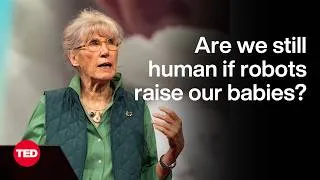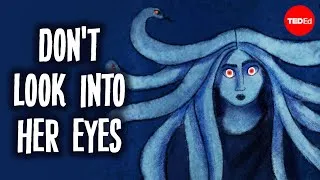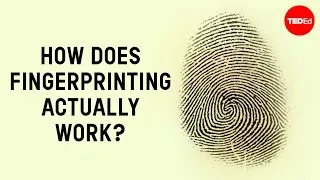请双击下面的英文字幕来播放视频。
翻译人员: Jessie zhang
校对人员: Yolanda Zhang
00:07
Consider the spot where you’re sitting.
0
7420
2360
考虑你现在坐的地方,
00:09
Travel backwards in time
1
9780
1860
时光倒流,
00:11
and it might’ve been submerged at
the bottom of a shallow sea,
2
11640
3860
它可能被淹没在浅海底部,
00:15
buried under miles of rock,
3
15500
1790
埋在几英里深的岩石下,
00:17
or floating through a molten,
infernal landscape.
4
17290
4430
或者漂浮在熔融的景观中。
00:21
But go back far enough—
5
21720
1848
但是回到久远的
00:23
about 4.6 billion years,
6
23568
2930
46亿年前,
00:26
and you’d be in the middle of an enormous
cloud of dust and gas
7
26498
4410
你将置身于无边的尘埃
和气体云团中,
00:30
orbiting a newborn star.
8
30908
3526
围绕一个新的星球旋转。
00:34
This is the setting for some of the
biggest, smallest mysteries of physics:
9
34434
5410
这是物理学最大,也是最小的谜团:
00:39
the mysteries of cosmic dust bunnies.
10
39844
3566
宇宙尘埃的谜团。
00:43
Seemingly empty regions
of space between stars
11
43410
3810
看似空旷的星际空间
00:47
actually contain clouds of gas and dust,
12
47220
4130
实际上存在着气体和尘埃云团,
00:51
usually blown there by supernovas.
13
51350
3345
通常被超新星吹到那里。
00:54
When a dense cloud reaches a certain
threshold called the Jeans mass,
14
54695
4650
当云团密度达到临界值,
即金斯质量,
00:59
it collapses in on itself.
15
59345
2870
它自身会坍塌。
01:02
The shrinking cloud rotates faster
and faster, and heats up,
16
62215
4550
收缩的云团越转越快,逐渐升温,
01:06
eventually becoming hot enough to burn
hydrogen in its core.
17
66765
4774
最后在内核点燃氢气。
01:11
At this point a star is born.
18
71539
2590
一个新的星球在此刻诞生。
01:14
As fusion begins in the new star,
19
74129
2560
随着新的星球开始出现聚变反应,
01:16
it sends out jets of gas that blow
off the top and bottom of the cloud,
20
76689
5290
它喷发出的气体
将云团顶部和底部吹散,
01:21
leaving behind an orbiting ring of gas
and dust called a protoplanetary disk.
21
81986
6920
留下一个环绕星球旋转的
气体和尘埃环,被称为原行星盘。
01:28
This is a surprisingly windy place;
22
88906
3058
这个地方的风出奇的大;
01:31
eddies of gas carry particles apart,
and send them smashing into each other.
23
91964
4980
气流旋涡带动粒子分离,
使它们互相碰撞,
01:36
The dust consists of tiny metal fragments,
bits of rock, and, further out, ices.
24
96944
6623
宇宙尘埃由小的金属碎片,
岩石颗粒,以及冰块组成。
01:43
We’ve observed thousands of these disks
in the sky,
25
103567
3124
我们可以在天空中观察到
数千个类似的原行星盘,
01:46
at various stages of development
26
106691
2260
它们处于不同的发展阶段,
01:48
as dust clumps together
into larger and larger masses.
27
108951
4810
随着尘埃聚集成群,变成更大的云团
01:53
Dust grains 100 times smaller than the
width of a human hair stick to each other
28
113761
5640
尘埃颗粒比人类的一根
头发丝还小100倍,
01:59
through what’s called
the van der Waals force.
29
119401
2920
它们之间的引力被称为范德华力。
02:02
That’s where a cloud of electrons
shifts to one side of a molecule,
30
122321
4390
那里电子云团会转移到分子的一侧,
02:06
creating a negative charge on one end,
and a positive charge on the other.
31
126716
4830
使得分子的一端产生正电荷,
一端产生负电荷。
02:11
Opposites attract, but van der Waals can
only hold tiny things together.
32
131546
5300
正负相吸,范德华力
将它们吸引在一起。
02:16
And there’s a problem: once dust
clusters grow to a certain size,
33
136846
4310
但问题是:一旦尘埃团
增长到一定规模,
02:21
the windy atmosphere of a disk should
constantly break them up
34
141156
3906
星盘的多风空气层
总是会把它们打碎,
02:25
as they crash into each other.
35
145062
1920
它们随之相互碰撞。
02:26
The question of how they continue to grow
is the first mystery of dust bunnies.
36
146982
6210
宇宙尘埃的一大谜题
就是它们如何继续膨胀。
02:33
One theory looks to electrostatic charge
to answer this.
37
153192
4225
静电力理论也许能回答这个问题。
02:37
Energetic gamma rays, x-rays,
and UV photons
38
157417
4119
高能伽马射线,X射线,紫外线光子
02:41
knock electrons off of gas
atoms within the disk,
39
161536
3754
使星盘中气体原子携带的电子减少,
02:45
creating positive ions
and negative electrons.
40
165290
3815
从而制造出正离子和负电子。
02:49
Electrons run into and stick to dust,
41
169105
3020
电子与尘埃的结合
02:52
making it negatively charged.
42
172125
2310
使尘埃携带负电荷,
02:54
Now, when the wind pushes
clusters together,
43
174435
3020
当风把尘埃粒子聚在一起,
02:57
like repels like
and slows them down as they collide.
44
177455
4840
同性相斥,碰撞也使得
粒子的运动速度降低。
03:02
With gentle collisions
they won’t fragment,
45
182295
2620
轻微的碰撞不会使它们碎裂,
03:04
but if the repulsion is too strong,
they’ll never grow.
46
184915
3770
但是如果相斥力太强,
它们就没法长大。
03:08
One theory suggests that high energy
particles
47
188685
3330
有一种理论说的是,高能量粒子
03:12
can knock more electrons off of some
dust clumps,
48
192015
3520
可以使尘埃团的电子减少,
03:15
leaving them positively charged.
49
195535
2280
使得它们携带正电荷。
03:17
Opposites again attract,
and clusters grow rapidly.
50
197815
4880
异性相吸,云团迅速增长,
03:22
But before long we reach
another set of mysteries.
51
202695
3630
但不久我们就会发现另一组谜团。
03:26
We know from evidence found in meteorites
52
206325
2650
我们从陨石中找到了证据,
03:28
that these fluffy dust bunnies
eventually get heated, melted
53
208975
4370
证明这些蓬松的尘埃团
最终被加热,融化,
03:33
and then cooled into solid
pellets called chondrules.
54
213345
5267
之后冷却成固体的陨石颗粒。
03:38
And we have no idea how
or why that happens.
55
218612
3978
但我们并不知道这一过程
究竟是如何发生的。
03:42
Furthermore, once those pellets do form,
how do they stick together?
56
222590
4880
一旦颗粒团形成,
它们又是如何黏在一起的呢?
03:47
The electrostatic forces from before
are too weak,
57
227470
3510
之前的静电力很弱,
03:50
and small rocks can’t be held together
by gravity either.
58
230980
4320
小的石块不会在引力下结合在一起,
03:55
Gravity increases proportionally to the
mass of the objects involved.
59
235300
4950
万有引力随着物体的质量变大
按比例地增加。
04:00
That’s why you could effortlessly escape
an asteroid the size of a small mountain
60
240251
4940
这就是为什么仅仅使用脚上的力量,
我们就可以毫不费力地
04:05
using just the force generated
by your legs.
61
245191
3390
从一个像小山一样大的小行星中逃逸。
04:08
So if not gravity, then what?
62
248581
2970
那么如果不是引力,又是什么?
04:11
Perhaps it’s dust.
63
251551
2180
可能是尘埃。
04:13
A fluffy dust rim collected around the
outside of the pellets
64
253731
4190
在颗粒团的外部收集
的蓬松的灰尘边缘可以
04:17
could act like Velcro.
65
257921
1825
像尼龙搭扣一样运动。
04:19
There’s evidence for this in meteors,
66
259746
2620
在陨石中可以找到相关的证据,
04:22
where we find many chondrules surrounded
by a thin rim of very fine material–
67
262366
5750
我们发现陨石颗粒上面有一层
薄薄的,质地细密的矿物质——
04:28
possibly condensed dust.
68
268116
3353
可能是凝结的尘埃。
04:31
Eventually the chondrule pellets get
cemented together inside larger rocks,
69
271469
5310
最后陨石颗粒粘合在一起
形成更大的岩石,
04:36
which at about 1 kilometer across
70
276779
2480
直径达1公里,
04:39
are finally large enough to hold
themselves together through gravity.
71
279259
4630
最终大到足够在引力下支撑自己。
04:43
They continue to collide and grow
into larger and larger bodies,
72
283889
4600
它们继续撞击并增长到更大的体积,
04:48
including the planets we know today.
73
288489
2718
包括我们已知的行星。
04:51
Ultimately, the seeds of
everything familiar–
74
291207
3150
最终,所有的事情开始变得熟悉——
04:54
the size of our planet, its position
within the solar system,
75
294357
3090
行星的规模,它们在太阳系的位置,
04:57
and its elemental composition–
76
297447
2490
以及它们的元素组成——
04:59
were determined by an uncountably large
series of random collisions.
77
299937
5856
是由无数随机的碰撞形成的。
05:05
Change the dust cloud just a bit,
78
305793
2387
稍微改变一下尘埃云,
05:08
and perhaps the conditions wouldn’t
have been right
79
308180
2630
也许我们星球上的环境
05:10
for the formation of life on our planet.
80
310810
2790
就不再适合生命的形成。
New videos
Original video on YouTube.com
关于本网站
这个网站将向你介绍对学习英语有用的YouTube视频。你将看到来自世界各地的一流教师教授的英语课程。双击每个视频页面上显示的英文字幕,即可从那里播放视频。字幕会随着视频的播放而同步滚动。如果你有任何意见或要求,请使用此联系表与我们联系。







